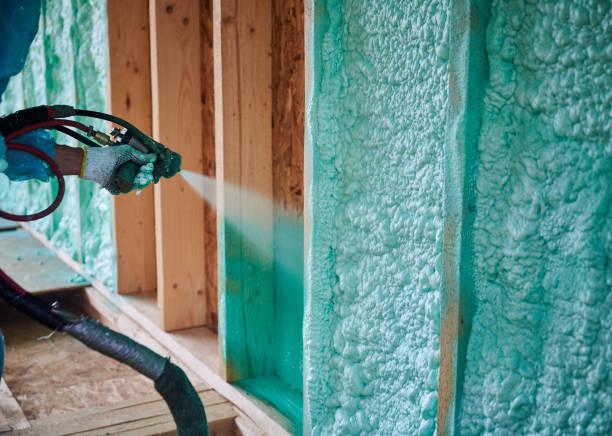How Much Does Spray Foam Insulation Cost?

Spray foam insulation has become a popular choice for homeowners and contractors alike, thanks to its superior energy efficiency, air-sealing properties, and long-term durability. Whether you’re constructing a new home or upgrading an existing one, insulation plays a critical role in maintaining indoor comfort and reducing utility bills. Among the many insulation options available, spray foam stands out for its high R-value and ability to expand into hard-to-reach spaces.
At the end of this article, you’ll have a clearer picture of how much you can expect to spend—and what you’re getting in return. For professional installation with trusted results, AAA Spray Foam Insulation offers reliable solutions tailored to your property’s unique needs.
Understanding the Basics of Spray Foam Insulation Costs
The cost of spray foam insulation typically ranges between $1.00 and $3.00 per board foot, depending on the type—open-cell or closed-cell. A board foot is a measurement that equals one square foot of area, one inch thick. Open-cell spray foam tends to be less expensive but provides slightly lower insulation performance, while closed-cell spray foam, though costlier, delivers a higher R-value and greater moisture resistance.
For a typical residential project, the total cost can range from $2,000 to $7,000, depending on the area to be insulated. For example, insulating an attic might cost between $1,500 and $3,500, while a whole-home project could easily exceed $6,000. These figures are ballpark estimates, and actual prices may vary based on local labor rates, accessibility, and other job-specific variables.
Factors That Influence Spray Foam Insulation Pricing
Several elements play a role in determining the final cost of your spray foam insulation project. One of the most significant is project size—the larger the area, the more material and labor required. Similarly, location affects cost due to regional variations in material availability and labor fees. Accessibility is another key factor; areas like crawl spaces or vaulted ceilings may require more effort and equipment, driving up labor costs.
The type of foam you choose also matters. Open-cell foam, which is lighter and more affordable, is typically used in interior applications. Closed-cell foam, denser and more expensive, is preferred for exterior walls and roofs due to its added structural benefits. Lastly, the thickness of the application and desired R-value can increase both material usage and price.
Is Spray Foam Insulation Worth the Investment?
While spray foam insulation can come with a higher upfront cost compared to traditional options like fiberglass or cellulose, its long-term benefits often outweigh the initial investment. Homeowners typically experience 20% to 40% energy savings after installation. Its ability to seal air leaks also improves indoor air quality and reduces HVAC wear and tear.
Moreover, spray foam adds structural integrity and moisture resistance to buildings, helping to prevent mold and water damage. These benefits contribute to the material’s long lifespan—up to 80 years or more, making it a cost-effective choice over time. When installed by professionals like AAA Spray Foam Insulation, the results are even more efficient and long-lasting.
Choosing the Right Installer Makes a Difference
Even the best spray foam material can underperform if not installed correctly. That’s why it’s essential to work with experienced and certified contractors who understand the complexities of spray foam application. Proper ventilation, curing time, and equipment all influence performance and safety. A reliable contractor will ensure even coverage, address potential ventilation concerns, and follow all building codes.
Selecting a qualified installer may cost a bit more upfront but can save you thousands in repairs or inefficient performance later. Take the time to research local providers, read customer reviews, and request detailed quotes to compare value.
FAQs
1. What’s the difference between open-cell and closed-cell spray foam?
Open-cell is lighter, softer, and more affordable, making it great for interior walls and ceilings. Closed-cell is denser, more moisture-resistant, and better suited for exterior or high-humidity areas.
2. Can I install spray foam insulation myself?
While DIY kits are available, professional installation is strongly recommended. Improper application can lead to poor performance, health risks, and structural issues.
3. How long does spray foam insulation last?
Spray foam insulation can last up to 80 years or more when properly installed and maintained, making it one of the most durable insulation options available.
4. Is spray foam insulation safe for indoor use?
Yes, once cured, spray foam is non-toxic and safe. However, during installation, proper ventilation is critical due to the chemicals involved in the expansion process.
5. Will spray foam help reduce my energy bills?
Yes. By sealing air leaks and offering high thermal resistance, spray foam insulation can reduce energy bills by up to 40%, depending on your home’s condition and climate.
- Art
- Causes
- Best Offers
- Crafts
- Dance
- Drinks
- Film
- Fitness
- Food
- Jogos
- Festival
- Gardening
- Health
- Início
- Literature
- Music
- Networking
- Outro
- Party
- Religion
- Shopping
- Sports
- Theater
- Wellness



